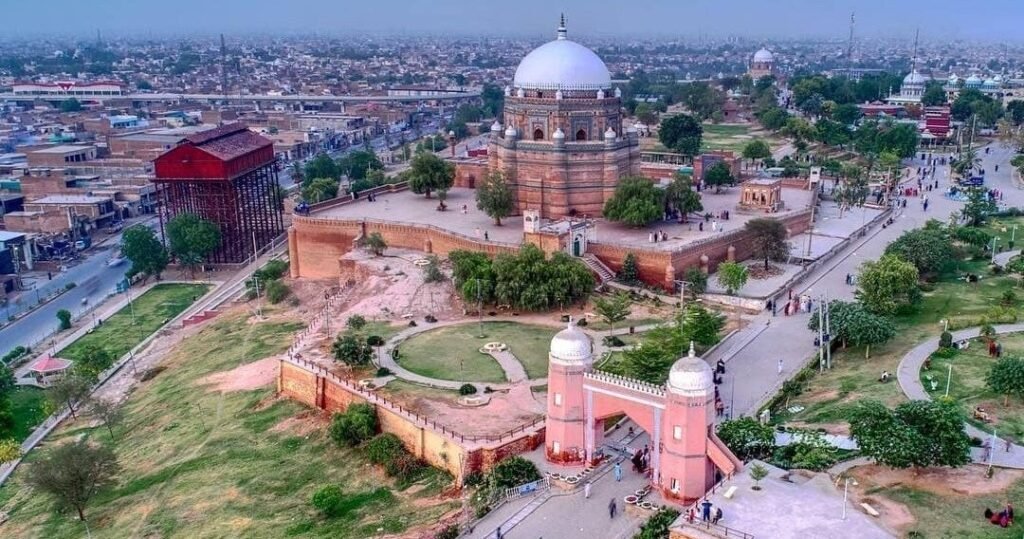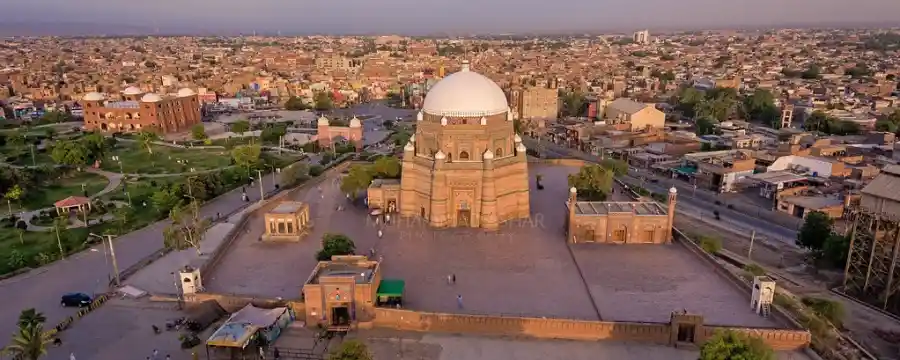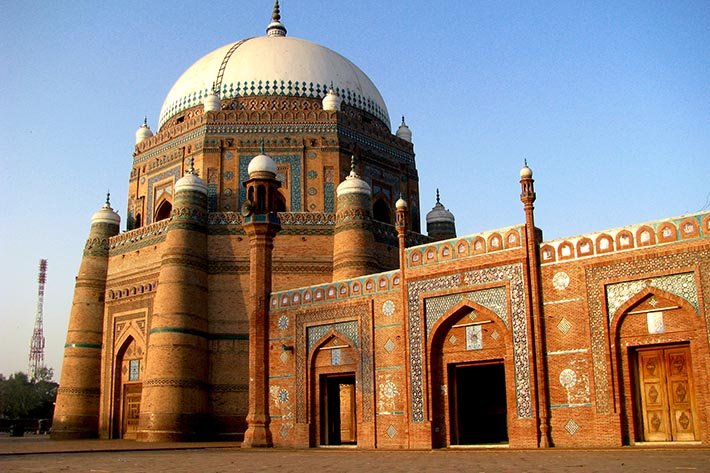The Multan Fort stands tall at great heights in history, has seen architectural evolution, and has held strategic importance for many centuries. Situated in the very heart of Multan in Pakistan, the fort has seen empires rising and then crumbling. That would mean that as far as the historical point of view goes, it surely is going to be an interesting subject to dig deep into. The present paper reviews the rich history of Multan Fort from this point of view, its origins, and architectural features, together with a list of rulers who stamped their distinctive touch on its walls.
- The Origins of Multan Fort
2.1 Ancient Foundations
The original beginnings of Multan Fort are veiled in the mists of very remote antiquity, many believe-even as far back as 800 BCE. Normally referred to as the “City of Saints,” since the Vedic Period, Multan has held a position of prominence. Recorded history states that during the conquests of Alexander the Great, the first fort was raised at Multan, but most of this history is known to be shrouded in mystery.
2.2. Hindu Shahi Dynasty Influence
From the 9th to the 11th century, significant extension and strengthening were carried out in Multan Fort by Hindu Shahi. The rulers of Hindu Shahi knew the importance of Multan because this city lay on key trade routes which connected the Indian subcontinent with Central Asia and the Middle East.

- Islamic Era
3.1. Arrival of the Muslim Dynasties
Starting with the arrival of Mahmud of Ghazni at the beginning of the 11th century, Multan Fort was conquered. Because of its position, the strategic importance of the fort proved so vital to the Ghaznavid Empire. Major renovations and extension works were carried out in building under the Islamic rule.
3.2. The Ghurid and Delhi Sultanate Period
In the 12th and 13th centuries, respectively, the fort came under the Ghurid Empire and then into the hands of the Delhi Sultanate. History, in general, can further be entertained with more fortification and strengthening during these periods, which proves that Multan continued to hold importance as a military stronghold.
- Mughal Era
4.1. Akbar’s Influence
During the times of Mughal Emperor Akbar the Great, from 1556 to 1605, the architectural development of the fort evolved much. During the times of Akbar prosperity and peace-impetus was given to heavier reconstruction and decoration of the fort. An attempt was made to integrate the fort into the vast Mughal design and administrative apparatus.
4.2. Role of Fort During the Mughal Empire
In the Mughal period, however, Multan Fort was also a military and administrative place. Thus, with its strategic location, the fort was very important in protecting the Mughal Empire against both external invasions and internal rebellions.
- The Sikh Period
5.1. Capture by Ranjit Singh
Conquered by the founder of the Sikh Empire, Ranjit Singh, in the early 19th century, as a matter of fact, it came into its importance from the conquest as an important stronghold for the Sikh Empire. The present look and construction are due to extensive renovations in this time period, and extensions were done with a tint of Sikh style in architecture.
5.2. The British Raj
It was to be the British invasion that was finally going to bring an end to Sikh rule in the mid-19th century. Upon the Second Anglo-Sikh War, which concluded in 1849, Multan Fort came under British Raj, which restored and preserved it. By that period though much of its military significance had reduced.
- Features of Multan Fort
6.1. The Lay-out of the Fort
High walls and strategic design make Multan Fort very famous. The general structure is thick, fortified walls with bastions in the important places, intended to meet long sieges and attacks. Various eras of history find reflection in the various styles of architecture seen in this fort.
6.2. Major Structures within the Fort
Shahi Qila or the Royal Fort: It was the chief residence and administrative centre. Shah Rukn-e-Alam Tomb: It forms one major shrine within the premises of the fort depicting a treatise on exquisite Islamic architecture.
The Fort Gates: The fort contains lots of gates, out of them Delhi and Lahore Gates are most well-renowned; each of them has something unique in terms of architecture and historical importance.

- Historical Importance
7.1. Multan Fort as a Strategic Military Asset
Being at this location, the Multan Fort has always played an important part in history from the military point of view. It was strategic as it obstructed crucial trade routes and hence was a great bar to the invasions of one empire after another.
7.2. Cultural and Religious Importance
The fort has played its role as a cultural and religious center, too. Shrines and mosques within the perimeter wall denote that it must have been a spiritual hub of activities, cultural interactions, and so on and so forth.
- The Fort in Modern Times
8.1. Preservation and Restoration Efforts
Renovation and conservation works have been carried out at Multan Fort during the past couple of years. This is done in order to retain its historical value while opening it for the tourists and historians alike.
8.2. The Fort as a Tourist Attraction
Hence, it comes out to be amongst those sites which are visited by people at utmost priority due to its gigantic historical importance and architectural excellence. The structure stands tall to hint at the greatness of civilization that once existed at dawn and stands for the historic legacy of Multan.
- Conclusion
The threads of various cultures, their respective rulers, and the epochs have all woven a tapestry into one entity known as the Multan Fort. Born during ancient times, unto this day and age it still stands strong, a signal for modern tourism as it acts like a symbol for historical and architectural heritage in Multan. Having witnessed the rise and fall of empires, its remnants made sure it would be preserved even for coming generations to know its worth.




